
Centennial Notes Archives

Daughter of Maryland’s First State Forester Celebrated 100th Birthday by Officiating at the Maryland State Forest & Park Service Centennial Time Capsule Ceremony Gambrill State Park- July 31, 2007
" The simple fact is that she has lived through and participated in the whole century of forestry and parks which we have been honoring for the last year and a half. It is no wonder that Maryland’s forest and park historians fell in love with her when they began to collect information for the Centennial two years ago. Her clear mind and astonishing memory has been an invaluable resource for all of us. When historians had questions about the life of Fred Besley or his views on many issues, Holly was often the ultimate authority. Ross Kimmel, Offut Johnson, Champ Zumbrun and Robert Bailey who are here with us today can all attest to this. The Centennial would simply hot have been the same without her." - Kirk P. Rodgers
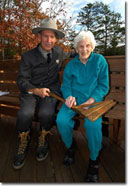
Daughter of Maryland’s First State Forester to Celebrate 100th Birthday Officiating at the Maryland State Forest & Park Service
On July 31, 2007, Helen “Holly” Besley Overington, daughter of Maryland’s legendary first State Forester, Fred W. Besley, will celebrate her 100th birthday by officiating at the Maryland State Forest & Park Service Centennial Time Capsule Ceremony. Holly will throw the first ceremonial hand-full of dirt to help bury the Time Capsule at Gambrill State Park, just outside of Frederick. Ms. Overington and other descendants of Fred W. Besley participated in several State Forest & Park Service Centennial events throughout the past year, adding their personnel touch to the history of the Maryland State Forest & Park Service. The Forest Service originated in April 1906 when Besley was named Maryland’s first State Forester. He was one of only three state foresters in the country at the time.
A hundred years ago John Glenn’s gift of 43 acres of the Hilton Estate to the Board of Forestry marked a turning point in the history of Maryland’s forests and parks. It is an event worthy of celebration and I am honored to be part of it. In April of this year I had the pleasure of standing next to Robert Garrett to recognize another turning point in Maryland’s history. His family’s 1906 donation of 1200 acres of forest land in Western Maryland mandated the creation of a Maryland Forest Service and launched the centennial which we have been celebrating for the past year. These two farsighted men, John Glenn and Robert Garrett, deserve great credit for their wisdom as well as their generosity and the interaction between the processes which they launched is a matter of fascination to historians. - Kirk P. Rodgers
"The Garrett family’s gift of this land to the State of Maryland in
1906, and the conditions that were attached to that gift..launched a
process of change in how we manage our forests that all Marylanders can
feel proud of today. It signaled the beginning of the century of
accomplishment in scientific management of forests and parks that we
have been honoring for the past year and a half in our celebration of
the Maryland Forestry and Parks Centennial (1906-2006). I am proud to
be standing here with the grandson of Robert Garrett to pay tribute to
that moment and to recognize the role that our forbearers played in
what happened a century ago and in what we see around us today." - Kirk
P. Rodgers
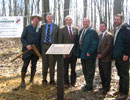 Steven W. Koehn, Maryland State Forester, addressed an audience on April 10th to commemorate the 100th anniversary of the date that Maryland’s first State Forester, Fred W. Besley, recorded the deed to the Garrett brothers’ land donation on April 10th, 1907 at 8 AM in the Garrett County Court House., "…for the purposes mentioned in Sec. 3 Chap.294 of Acts of MD 1906" – what we call today the Forest Conservation Act of 1906. It was this donation of 1,917.5 acres that served as the starting point for what are now the Maryland State Forestry Service and State Park Service, which together manage nearly 500,000 acres of public lands. This event also marked the opening of the Kindness Forestry Demonstration Area.
Steven W. Koehn, Maryland State Forester, addressed an audience on April 10th to commemorate the 100th anniversary of the date that Maryland’s first State Forester, Fred W. Besley, recorded the deed to the Garrett brothers’ land donation on April 10th, 1907 at 8 AM in the Garrett County Court House., "…for the purposes mentioned in Sec. 3 Chap.294 of Acts of MD 1906" – what we call today the Forest Conservation Act of 1906. It was this donation of 1,917.5 acres that served as the starting point for what are now the Maryland State Forestry Service and State Park Service, which together manage nearly 500,000 acres of public lands. This event also marked the opening of the Kindness Forestry Demonstration Area.
 James Mallow, Maryland’s State Forester from 1995 to 2001, looks back at three of his predecessors, who served as State Foresters after the resignation of Fred W. Besley: Joe Kaylor, Henry C. Buckingham, and A.R. “Pete” Bond. Mr. Mallow cites Joe Kaylor’s major contribution in recognizing early on the importance and relationship between forests and the watershed scale of those forests. In a 1957 article in the Department’s newsletter, The Old Line Acorn, Kaylor noted “the Department has the first try at saving, increasing, or improving both the quantity and quality of our water supplies, since watershed improvement is primarily a forestry issue.” He also notes that Maryland’s current State Forester, Steve Koehn’s oft spoken phrase - “forests are the solution to water pollution” - needs to get more press time.
James Mallow, Maryland’s State Forester from 1995 to 2001, looks back at three of his predecessors, who served as State Foresters after the resignation of Fred W. Besley: Joe Kaylor, Henry C. Buckingham, and A.R. “Pete” Bond. Mr. Mallow cites Joe Kaylor’s major contribution in recognizing early on the importance and relationship between forests and the watershed scale of those forests. In a 1957 article in the Department’s newsletter, The Old Line Acorn, Kaylor noted “the Department has the first try at saving, increasing, or improving both the quantity and quality of our water supplies, since watershed improvement is primarily a forestry issue.” He also notes that Maryland’s current State Forester, Steve Koehn’s oft spoken phrase - “forests are the solution to water pollution” - needs to get more press time.
 “This is a pivotal time in the history of the state and private forestlands. It is a moment that cries out for a new cadre of charismatic and influential forest conservation leaders,” remarked Steven W. Koehn, Maryland State Forester, during an address he gave for the Maryland Forests Association Conference Annual Meeting. “If the history of state and private forests in Maryland reveals anything, it is that land and people are intertwined throughout that history.. Now is the time for all of us to step forward and become the catalyst . . . calling out the visionary, charismatic and influential from within our own ranks and from across the breadth of our state’s forestry community to lay the foundation for the next century of progress.”
“This is a pivotal time in the history of the state and private forestlands. It is a moment that cries out for a new cadre of charismatic and influential forest conservation leaders,” remarked Steven W. Koehn, Maryland State Forester, during an address he gave for the Maryland Forests Association Conference Annual Meeting. “If the history of state and private forests in Maryland reveals anything, it is that land and people are intertwined throughout that history.. Now is the time for all of us to step forward and become the catalyst . . . calling out the visionary, charismatic and influential from within our own ranks and from across the breadth of our state’s forestry community to lay the foundation for the next century of progress.”

“Trees are key to reversing the declining health of the Bay and providing
clean water to Maryland’s ever-increasing population is the protection
and establishment of forest lands. A healthy forested watershed is no
accident and needs management to maintain vigor in the face of invasive
insects and diseases, whose spread is encouraged by the escalating
fragmentation of land ownership and globalization of trade,” writes Ann
Hairston-Strang, Forest Hydrologist with DNR’s Forest Service.
 Newspaper reporters in the 1940’s and 1950’s called this area “The Maryland Alps,” the place where winter was king - “Maryland’s first genuine winter sports area.” Can you identify this place? Here are a few more clues: “The first ski event south of the Mason and Dixon Line”, occurred here in 1941. In the 1950’s, this locale was called Maryland’s skiing mecca.” Give up? These accolades refer to present day New Germany State Park and Savage River State Forest, where in 1940, recreational skiing was as new and fresh as the first snowfall of that winter.
Newspaper reporters in the 1940’s and 1950’s called this area “The Maryland Alps,” the place where winter was king - “Maryland’s first genuine winter sports area.” Can you identify this place? Here are a few more clues: “The first ski event south of the Mason and Dixon Line”, occurred here in 1941. In the 1950’s, this locale was called Maryland’s skiing mecca.” Give up? These accolades refer to present day New Germany State Park and Savage River State Forest, where in 1940, recreational skiing was as new and fresh as the first snowfall of that winter.
 Chesapeake forests provide enormous economic and ecological benefits. And yet we continue to lose them at an astonishing rate. How can we stop the losses
and begin actually reforesting parts of the watershed? The emerging
answer—accounting for the full economic value of forests and using
market mechanisms to protect them—is central to a new initiative called
Forestry for the Bay Program. This collaborative approach for
sustainable forestry combines the vast partnership network of the Bay
Program with the technical expertise of public and private foresters
and the coordinating efforts of the nonprofit Alliance for the
Chesapeake Bay.” Author Rebecca Hanmer, Director of the EPA’s Chesapeake
Bay Program Office, discusses the new breed of economists that have
teamed up with ecologists to start putting dollar figures on the
“ecological services” provided by Maryland’s forests.
Chesapeake forests provide enormous economic and ecological benefits. And yet we continue to lose them at an astonishing rate. How can we stop the losses
and begin actually reforesting parts of the watershed? The emerging
answer—accounting for the full economic value of forests and using
market mechanisms to protect them—is central to a new initiative called
Forestry for the Bay Program. This collaborative approach for
sustainable forestry combines the vast partnership network of the Bay
Program with the technical expertise of public and private foresters
and the coordinating efforts of the nonprofit Alliance for the
Chesapeake Bay.” Author Rebecca Hanmer, Director of the EPA’s Chesapeake
Bay Program Office, discusses the new breed of economists that have
teamed up with ecologists to start putting dollar figures on the
“ecological services” provided by Maryland’s forests.
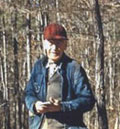 “If Grandfather Besley were here today he would be astonished. In the early part of the century he was concerned with the twin threats of over-harvesting and destructive fires. Today’s urban and suburban sprawl destroys forests in a far more decisive and permanent manner. The actions he took to control forest fires and to improve management practices seem simple by comparison to what today’s forest managers and private owners must grapple with.” Kirk P. Rodgers, using the Besley and Rodgers family business as an example, looks at the role of private forest landowners who collectively own 78% of Maryland’s forests and must ultimately be credited with the bulk of change and progress made during the last century as well as meet the challenges facing the future of Maryland’s forest resource.
“If Grandfather Besley were here today he would be astonished. In the early part of the century he was concerned with the twin threats of over-harvesting and destructive fires. Today’s urban and suburban sprawl destroys forests in a far more decisive and permanent manner. The actions he took to control forest fires and to improve management practices seem simple by comparison to what today’s forest managers and private owners must grapple with.” Kirk P. Rodgers, using the Besley and Rodgers family business as an example, looks at the role of private forest landowners who collectively own 78% of Maryland’s forests and must ultimately be credited with the bulk of change and progress made during the last century as well as meet the challenges facing the future of Maryland’s forest resource.
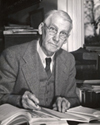 On February 16, 1942, when Fred W. Besley retired with 36 years of
State Service (1906-1942), he held the national record for the longest
continuous service of a State Forester, a record which still stands
today. He had served under seven administrations of Governors both
Democrats and Republicans. DNR’s Forest Service continues to carry
forward the legacy of early foresters like Fred Besley. With the
overall healthy appearance of the forest on public lands today, it is
hard to imagine that most of the land was once cutover and abandoned. -
Part 3 of a 3-part series
On February 16, 1942, when Fred W. Besley retired with 36 years of
State Service (1906-1942), he held the national record for the longest
continuous service of a State Forester, a record which still stands
today. He had served under seven administrations of Governors both
Democrats and Republicans. DNR’s Forest Service continues to carry
forward the legacy of early foresters like Fred Besley. With the
overall healthy appearance of the forest on public lands today, it is
hard to imagine that most of the land was once cutover and abandoned. -
Part 3 of a 3-part series
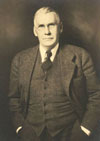 Fred W. Besley set a very high standard for those who followed after him, raising the bar high, pioneering and establishing many scientific forestry practices in Maryland. The 1906 Forestry Conservation Act quickly put Maryland in the forefront of the national forestry conservation movement at the State level. Besley’s arrival that same year as Maryland’s first State Forester marked the beginning of a new forestry conservation era called the “Custodial” period. During this time (1906-1942), management placed its emphasis on protecting, nurturing, and restoring the forest back to health. Foresters surveyed and mapped the forests for the first time, established tree nurseries and acquired land for public use. The custodial period coincided with the entire span of Fred W. Besley’s career as State Forester.
Fred W. Besley set a very high standard for those who followed after him, raising the bar high, pioneering and establishing many scientific forestry practices in Maryland. The 1906 Forestry Conservation Act quickly put Maryland in the forefront of the national forestry conservation movement at the State level. Besley’s arrival that same year as Maryland’s first State Forester marked the beginning of a new forestry conservation era called the “Custodial” period. During this time (1906-1942), management placed its emphasis on protecting, nurturing, and restoring the forest back to health. Foresters surveyed and mapped the forests for the first time, established tree nurseries and acquired land for public use. The custodial period coincided with the entire span of Fred W. Besley’s career as State Forester.
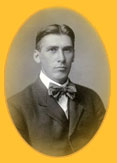 Can you imagine Maryland without a state forest or state park? Well, a
little less than one hundred years ago, in 1905, there was such a time.
That all changed in 1906, when two brothers, John and Robert Garrett,
made a generous donation of 1,917 acres of forest land in Garrett
County to the State of Maryland. This tract of land is known today as
Garrett State Forest, Maryland’s first state forest. This donation,
along with the passing of the 1906 Forestry Conservation Act, and the
hiring of Fred W. Besley to be Maryland's first State Forester, marks the beginning of the forestry conservation movement in Maryland. In
his role as a State Forester, Besley set a very high standard for
those who followed after him, raising the bar high, pioneering and
establishing many scientific forestry practices in Maryland. He was a
trailblazing, forestry pioneer.
Can you imagine Maryland without a state forest or state park? Well, a
little less than one hundred years ago, in 1905, there was such a time.
That all changed in 1906, when two brothers, John and Robert Garrett,
made a generous donation of 1,917 acres of forest land in Garrett
County to the State of Maryland. This tract of land is known today as
Garrett State Forest, Maryland’s first state forest. This donation,
along with the passing of the 1906 Forestry Conservation Act, and the
hiring of Fred W. Besley to be Maryland's first State Forester, marks the beginning of the forestry conservation movement in Maryland. In
his role as a State Forester, Besley set a very high standard for
those who followed after him, raising the bar high, pioneering and
establishing many scientific forestry practices in Maryland. He was a
trailblazing, forestry pioneer.
 A full century of forestry in Maryland. By some measures, this is a long time -- by some other measures, it’s hardly a wink in time. Since folks involved with forest management are accustomed to thinking in terms of a forest life-cycle, the thought of a hundred-year period can pass through the mind’s eye with little notice... until you stop and think about what has occurred in these particular past hundred years: we have moved from horses to automobiles; cell phones replace the telegraph; schoolchildren use laptops and satellite links instead of chalkboards; people have left footprints in moon dust; and today horses are pets and oxen are curiosities. Thinking of these changes makes you wonder about what advancements have occurred in Maryland’s forest industry.
A full century of forestry in Maryland. By some measures, this is a long time -- by some other measures, it’s hardly a wink in time. Since folks involved with forest management are accustomed to thinking in terms of a forest life-cycle, the thought of a hundred-year period can pass through the mind’s eye with little notice... until you stop and think about what has occurred in these particular past hundred years: we have moved from horses to automobiles; cell phones replace the telegraph; schoolchildren use laptops and satellite links instead of chalkboards; people have left footprints in moon dust; and today horses are pets and oxen are curiosities. Thinking of these changes makes you wonder about what advancements have occurred in Maryland’s forest industry.
 Because it took on the role of managing an important suburban park, the Forestry Board’s role in the life of the City, the State and the people of Maryland provided it with a foundation to become a lasting State institution. The Board of Forestry in the 1920s solidified the Patapsco Valley’s connection with city park system by purchasing most of the private property east to the city line. Within a few years, automobilists from Baltimore City were driving down stretches of windy tree-lined roads to the park.
Because it took on the role of managing an important suburban park, the Forestry Board’s role in the life of the City, the State and the people of Maryland provided it with a foundation to become a lasting State institution. The Board of Forestry in the 1920s solidified the Patapsco Valley’s connection with city park system by purchasing most of the private property east to the city line. Within a few years, automobilists from Baltimore City were driving down stretches of windy tree-lined roads to the park.
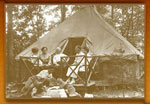 The Patapsco Forest Reserve’s recreational amenities provided middle-class suburbanites with an opportunity to blend rugged outdoor living with intellectual contemplation—or, at the very least, a chance for greater aesthetic appreciation. Campsites, in particular, were a blend of the primitive and the modern. In some cases, the influence of Baltimore’s elite progressivism was obvious — such as Victor Bloede’s philanthropic efforts and the Hutzler campsites, but in other cases the elite influence was more subtle — such as in the experiences of many other summer campers and visitors to the park. Either way, the new park provided the Forestry Board with a place to illustrate the benefits of scientific forestry to people who, for the most part, did not own large tracts of land, while simultaneously providing the white middle class with a chance to, as Besley put it, “rough it pleasantly.”
The Patapsco Forest Reserve’s recreational amenities provided middle-class suburbanites with an opportunity to blend rugged outdoor living with intellectual contemplation—or, at the very least, a chance for greater aesthetic appreciation. Campsites, in particular, were a blend of the primitive and the modern. In some cases, the influence of Baltimore’s elite progressivism was obvious — such as Victor Bloede’s philanthropic efforts and the Hutzler campsites, but in other cases the elite influence was more subtle — such as in the experiences of many other summer campers and visitors to the park. Either way, the new park provided the Forestry Board with a place to illustrate the benefits of scientific forestry to people who, for the most part, did not own large tracts of land, while simultaneously providing the white middle class with a chance to, as Besley put it, “rough it pleasantly.”
 On May 22, 1911, the editor of the Baltimore Morning Sun wrote, “Baltimore is threatened again with a short water supply, due in part, at least, to the decreasing flow of the streams which feed our reservoirs.” Noting the importance of tree cover, the Sun bemoaned, “Everybody knows it [that tree cover is important], and yet the portable sawmill is going from woodland to woodland doing its work of destruction.” Whatever reservations Besley may have harbored about immersing his Forestry Board into the complexities of Maryland politics, by 1912 he clearly had no choice. Besley had to widen the Forestry Board’s appeal, or risk being appropriated into ineffectual obscurity.
On May 22, 1911, the editor of the Baltimore Morning Sun wrote, “Baltimore is threatened again with a short water supply, due in part, at least, to the decreasing flow of the streams which feed our reservoirs.” Noting the importance of tree cover, the Sun bemoaned, “Everybody knows it [that tree cover is important], and yet the portable sawmill is going from woodland to woodland doing its work of destruction.” Whatever reservations Besley may have harbored about immersing his Forestry Board into the complexities of Maryland politics, by 1912 he clearly had no choice. Besley had to widen the Forestry Board’s appeal, or risk being appropriated into ineffectual obscurity.
 The Forestry Board’s decision to hire Frederick Wilson Besley in 1906 was perhaps as significant as the creation of the Forestry Board itself. Besley would serve as Maryland State Forester for 36 years—providing the Board (and later the Department) of Forestry with a stabilizing force. Hired to protect and manage existing forest reserves and to spread the gospel of scientific management, Besley soon found himself confronted with a limited operating budget, a small support staff dominated by volunteers, and an apathetic legislature. He was entirely dependent upon his ability to educate the general public about the benefits of scientific forestry. This Centennial Note is the 2nd in a 5-part series.
The Forestry Board’s decision to hire Frederick Wilson Besley in 1906 was perhaps as significant as the creation of the Forestry Board itself. Besley would serve as Maryland State Forester for 36 years—providing the Board (and later the Department) of Forestry with a stabilizing force. Hired to protect and manage existing forest reserves and to spread the gospel of scientific management, Besley soon found himself confronted with a limited operating budget, a small support staff dominated by volunteers, and an apathetic legislature. He was entirely dependent upon his ability to educate the general public about the benefits of scientific forestry. This Centennial Note is the 2nd in a 5-part series.
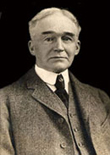 A Saturday morning canoe trip on April 16, 1921 led by State Forester Fred W. Besley and Robert Garrett, a partner in a leading banking firm and member of the Baltimore Municipal Arts Society, garnered headlines in both the Baltimore Morning and Evening Sun: “Plan [for] Automobile Drive through Beauty Spot,” and the “Plan to Preserve Banks of Patapsco.” Historian Robert F. Bailey explains, “My purpose here is to articulate the interdependent relationship that developed between the Maryland Board of Forestry and the Baltimore City urban elite… this
interaction proved to be a critical turning point in the development of a State institution.” This Centennial Note is the first in a 5-part series.
A Saturday morning canoe trip on April 16, 1921 led by State Forester Fred W. Besley and Robert Garrett, a partner in a leading banking firm and member of the Baltimore Municipal Arts Society, garnered headlines in both the Baltimore Morning and Evening Sun: “Plan [for] Automobile Drive through Beauty Spot,” and the “Plan to Preserve Banks of Patapsco.” Historian Robert F. Bailey explains, “My purpose here is to articulate the interdependent relationship that developed between the Maryland Board of Forestry and the Baltimore City urban elite… this
interaction proved to be a critical turning point in the development of a State institution.” This Centennial Note is the first in a 5-part series.
 Aldo Leopold, Teddy Roosevelt and Gifford Pinchot are names that most people recognize as great leaders of the North American conservation movement. What many do not realize is that these men were also hunters. They understood that certain activities such as unregulated hunting, large scale land clearing, wildfires and soil erosion were having dramatic impacts on wildlife, their habitats, and on forest health. They, along with others, saw the need for stricter laws and regulations, the need for government to manage and protect the wildlife and the land, and the need for sustainable funding to carry out this mission.
Aldo Leopold, Teddy Roosevelt and Gifford Pinchot are names that most people recognize as great leaders of the North American conservation movement. What many do not realize is that these men were also hunters. They understood that certain activities such as unregulated hunting, large scale land clearing, wildfires and soil erosion were having dramatic impacts on wildlife, their habitats, and on forest health. They, along with others, saw the need for stricter laws and regulations, the need for government to manage and protect the wildlife and the land, and the need for sustainable funding to carry out this mission.
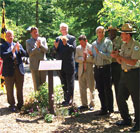 In 1907, Catonsville’s John Glenn planted the seeds for Patapsco Valley State Park, Maryland’s First State Park, by donating 43 acres of his Hilton Estate to the Maryland State Board of Forestry. State Forester F.W. Besley promoted the Patapsco Forest Reserve as a recreational park in 1910 – a pioneering concept. The “park” attracted picnickers and campers from Baltimore City and surrounding communities. By 1916, about 75 campsites were open, accommodating hundreds of campers and thousands of visitors. Patapsco’s establishment laid the foundation for today’s Maryland State Park System. A DNR Centennial Plaque was dedicated to recognize Patapsco Valley State Park as Maryland’s first state park on May 23, 2006.
In 1907, Catonsville’s John Glenn planted the seeds for Patapsco Valley State Park, Maryland’s First State Park, by donating 43 acres of his Hilton Estate to the Maryland State Board of Forestry. State Forester F.W. Besley promoted the Patapsco Forest Reserve as a recreational park in 1910 – a pioneering concept. The “park” attracted picnickers and campers from Baltimore City and surrounding communities. By 1916, about 75 campsites were open, accommodating hundreds of campers and thousands of visitors. Patapsco’s establishment laid the foundation for today’s Maryland State Park System. A DNR Centennial Plaque was dedicated to recognize Patapsco Valley State Park as Maryland’s first state park on May 23, 2006.
 Arbor Day 2006 marked the 100th anniversary of the signing of the 1906 Maryland Forest Conservation Act. The law was so innovative that it quickly moved Maryland to the forefront of the national forest conservation movement. We were only the third state in the country to initiate a statewide forest conservation program. Eight years later, the State Legislature passed the Roadside Tree Law. One of the first of its kind, Maryland’s law would later serve as a model imitated across the country. It authorized the state forestry department to plant and protect trees along Maryland public right of ways. It also enabled the state forestry division to establish a state tree nursery.
Arbor Day 2006 marked the 100th anniversary of the signing of the 1906 Maryland Forest Conservation Act. The law was so innovative that it quickly moved Maryland to the forefront of the national forest conservation movement. We were only the third state in the country to initiate a statewide forest conservation program. Eight years later, the State Legislature passed the Roadside Tree Law. One of the first of its kind, Maryland’s law would later serve as a model imitated across the country. It authorized the state forestry department to plant and protect trees along Maryland public right of ways. It also enabled the state forestry division to establish a state tree nursery.
 On Sunday, October 15, 2006 members of the State Forest and Parks Centennial Committee were joined by many of DNR State Parks and Forest Service staff, including retired men and women who were once part of Maryland's forest fire fighting team. Also on hand were three generations of descendents of Maryland's first State Forester, Fred W. Besley. The group gathered at the base of the Thayerville Forest Fire Lookout Tower Trail in Deep Creek Lake State Park to dedicate a Centennial Plaque to Forest Wardens and Fire Towers. When the State of Maryland established the office of State Forester in 1906, one of the first priorities for the new forester, Fred W. Besley, was finding the means to suppress forest fires that were devastating Maryland's timber resources.
On Sunday, October 15, 2006 members of the State Forest and Parks Centennial Committee were joined by many of DNR State Parks and Forest Service staff, including retired men and women who were once part of Maryland's forest fire fighting team. Also on hand were three generations of descendents of Maryland's first State Forester, Fred W. Besley. The group gathered at the base of the Thayerville Forest Fire Lookout Tower Trail in Deep Creek Lake State Park to dedicate a Centennial Plaque to Forest Wardens and Fire Towers. When the State of Maryland established the office of State Forester in 1906, one of the first priorities for the new forester, Fred W. Besley, was finding the means to suppress forest fires that were devastating Maryland's timber resources.
 Fred W. Besley, Maryland’s first State Forester, deserves great credit for establishing both statewide forest conservation and a system of parks. On Oct. 10, 2006 members of the State Forest and Parks Centennial Committee were joined by many of the volunteer Friends of Patapsco Valley State Park, DNR State Parks and Forest Service staff, and interested citizens, including descendents of Maryland's first State Forester, Fred W. Besley, to dedicate a Centennial Plaque on the site of the Besley Demonstration Campsite, where outdoor recreation on Maryland State Forests and Parks originated. Kirk P. Rogers shared family memories of his grandfather from the podium. Another honored guest at the ceremony was Helen Besley Overton, the daughter of Maryland’s first state forester, Fred W. Besley.
Fred W. Besley, Maryland’s first State Forester, deserves great credit for establishing both statewide forest conservation and a system of parks. On Oct. 10, 2006 members of the State Forest and Parks Centennial Committee were joined by many of the volunteer Friends of Patapsco Valley State Park, DNR State Parks and Forest Service staff, and interested citizens, including descendents of Maryland's first State Forester, Fred W. Besley, to dedicate a Centennial Plaque on the site of the Besley Demonstration Campsite, where outdoor recreation on Maryland State Forests and Parks originated. Kirk P. Rogers shared family memories of his grandfather from the podium. Another honored guest at the ceremony was Helen Besley Overton, the daughter of Maryland’s first state forester, Fred W. Besley.
 The history of the Susquehanna River Valley demonstrates the reliance that pioneer settlers placed on waterways for both power and transportation. That story is told at Susquehanna State Park. Captain John Smith first explored the Susquehanna River in 1608. It impressed him favorably. He noted that "heaven and earth seemed never to have agreed better to frame a place for man's commodious and delightful habitation." More recently, Susquehanna State Park has acquired an historical landmark along the Chesapeake National Water Trail, thanks to Exelon Corporations’ generous donation of Roberts Island to the State of Maryland.
The history of the Susquehanna River Valley demonstrates the reliance that pioneer settlers placed on waterways for both power and transportation. That story is told at Susquehanna State Park. Captain John Smith first explored the Susquehanna River in 1608. It impressed him favorably. He noted that "heaven and earth seemed never to have agreed better to frame a place for man's commodious and delightful habitation." More recently, Susquehanna State Park has acquired an historical landmark along the Chesapeake National Water Trail, thanks to Exelon Corporations’ generous donation of Roberts Island to the State of Maryland.
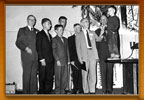 Today’s all-volunteer Forestry Boards are made up of individuals who are interested in sustainable forestry and have a desire to see that resources are used wisely and renewed. Board members work closely with foresters throughout the State to conserve and improve Maryland’s forest resource and promote forest management through education and advocacy, tree planting projects and other programs. They work to improve the forest environment in urban and suburban as well as rural areas and to educate people about the benefits of forests and trees. For over 20 years they have worked hand-in-hand with the DNR’s Forest Service to conduct a week-long summer program for high school students on forestry as a career.
Today’s all-volunteer Forestry Boards are made up of individuals who are interested in sustainable forestry and have a desire to see that resources are used wisely and renewed. Board members work closely with foresters throughout the State to conserve and improve Maryland’s forest resource and promote forest management through education and advocacy, tree planting projects and other programs. They work to improve the forest environment in urban and suburban as well as rural areas and to educate people about the benefits of forests and trees. For over 20 years they have worked hand-in-hand with the DNR’s Forest Service to conduct a week-long summer program for high school students on forestry as a career.
 The Civilian Conservation Corps (CCC) was a key to the greatest national forest and park development effort in American history. Organized by President Franklin D. Roosevelt during the Great Depression, the CCC employed over three million young men between the ages of 18 and 25 across the nation. Under Maryland State Forester Fred W. Besley's direction, a "tree army" of 35, 800 men built and improved State Forests and Parks. The CCC conducted lasting conservation work on both public and private lands by constructing roads, buildings and pavilions; erecting fire towers; fighting forest fires, planting millions of trees; and stabilizing soil erosion. We dedicate this plaque with sincere gratitude to the men of the CCC". - Dedicated September 17, 2006, Gambrill State Park. This article is the third of our three-part series about the C.C.C. and their contribution to Maryland's State Forests and Parks.
The Civilian Conservation Corps (CCC) was a key to the greatest national forest and park development effort in American history. Organized by President Franklin D. Roosevelt during the Great Depression, the CCC employed over three million young men between the ages of 18 and 25 across the nation. Under Maryland State Forester Fred W. Besley's direction, a "tree army" of 35, 800 men built and improved State Forests and Parks. The CCC conducted lasting conservation work on both public and private lands by constructing roads, buildings and pavilions; erecting fire towers; fighting forest fires, planting millions of trees; and stabilizing soil erosion. We dedicate this plaque with sincere gratitude to the men of the CCC". - Dedicated September 17, 2006, Gambrill State Park. This article is the third of our three-part series about the C.C.C. and their contribution to Maryland's State Forests and Parks.
 The Civilian Conservation Corps (C.C.C.) was a massive Federal works program during the Great Depression. In Maryland, the C.C.C. put a total of 30,000 young men to work reclaiming natural resources and building facilities for public accommodation in the out of doors. The C.C.C. built lakes, cabins, pavilions, trails, campgrounds and other visitor amenities all over the state, though principally in Western Maryland. This article is the second of a three-part series about the C.C.C. and their contribution to Maryland's State Forests and Parks. Fred W. Besley, Maryland's State Forester (1906-1942) later indicated the work of the C.C.C. set Maryland’s forests and parks ahead by 20 years.
The Civilian Conservation Corps (C.C.C.) was a massive Federal works program during the Great Depression. In Maryland, the C.C.C. put a total of 30,000 young men to work reclaiming natural resources and building facilities for public accommodation in the out of doors. The C.C.C. built lakes, cabins, pavilions, trails, campgrounds and other visitor amenities all over the state, though principally in Western Maryland. This article is the second of a three-part series about the C.C.C. and their contribution to Maryland's State Forests and Parks. Fred W. Besley, Maryland's State Forester (1906-1942) later indicated the work of the C.C.C. set Maryland’s forests and parks ahead by 20 years.
 The Civilian Conservation Corps (C.C.C.) was a massive Federal works program during the Great Depression. In Maryland, the C.C.C. put a total of 30,000 young men to work reclaiming natural resources and building facilities for public accommodation in the out of doors. The C.C.C. built lakes, cabins, pavilions, trails, campgrounds and other visitor amenities all over the state, though principally in Western Maryland. This article begins a three-part series about the C.C.C. and their contribution to Maryland's State Forests and Parks. Join the MD Dept of Natural Resources and the Centennial Committee at Gambrill State Park on Sunday, Sept. 17th at 2:00 pm as we honor the C.C.C. for their contributions to Maryland's state forests and parks. Guest speakers include former CCC members.
The Civilian Conservation Corps (C.C.C.) was a massive Federal works program during the Great Depression. In Maryland, the C.C.C. put a total of 30,000 young men to work reclaiming natural resources and building facilities for public accommodation in the out of doors. The C.C.C. built lakes, cabins, pavilions, trails, campgrounds and other visitor amenities all over the state, though principally in Western Maryland. This article begins a three-part series about the C.C.C. and their contribution to Maryland's State Forests and Parks. Join the MD Dept of Natural Resources and the Centennial Committee at Gambrill State Park on Sunday, Sept. 17th at 2:00 pm as we honor the C.C.C. for their contributions to Maryland's state forests and parks. Guest speakers include former CCC members.
 With a salary of $1500.00 a year, a budget of $2000.00, and a staff of three
assistant foresters and a secretary, Besley set out to undo centuries of poor land practices and spread the message of the new science of forestry with an almost religious fervor. Along with teaching Marylanders the value of practicing sound forest management techniques, Besley knew that preventing forest fires was an equally important conservation practice. Decades of poor logging practices and indiscriminate burning of the forest left poor soils, erosion, and large uncontrolled fires that threatened life, property, and the natural ecosystem. One of Besley’s first tasks was to create a network of volunteer Forest Wardens to educate and enforce Maryland’s new forest fire protection laws.
With a salary of $1500.00 a year, a budget of $2000.00, and a staff of three
assistant foresters and a secretary, Besley set out to undo centuries of poor land practices and spread the message of the new science of forestry with an almost religious fervor. Along with teaching Marylanders the value of practicing sound forest management techniques, Besley knew that preventing forest fires was an equally important conservation practice. Decades of poor logging practices and indiscriminate burning of the forest left poor soils, erosion, and large uncontrolled fires that threatened life, property, and the natural ecosystem. One of Besley’s first tasks was to create a network of volunteer Forest Wardens to educate and enforce Maryland’s new forest fire protection laws.
 The roots of the Big Tree Champion contest are planted in Maryland, for it all started in “the Old Line State.” Fred W. Besley, Maryland’s first State Forester (1906-1942), is the father of the National Big Tree Champion Contest. In his booklet, Big Tree Champions of Maryland: A Record of the Largest Trees of the Principal Species, printed in 1956, Besley wrote that the forests of Maryland were rich in different kinds of trees, “probably more than 250 native tree species, and there was a universal interest in notable trees.” Because of this, Besley was inspired to organize a Big Tree program.
The roots of the Big Tree Champion contest are planted in Maryland, for it all started in “the Old Line State.” Fred W. Besley, Maryland’s first State Forester (1906-1942), is the father of the National Big Tree Champion Contest. In his booklet, Big Tree Champions of Maryland: A Record of the Largest Trees of the Principal Species, printed in 1956, Besley wrote that the forests of Maryland were rich in different kinds of trees, “probably more than 250 native tree species, and there was a universal interest in notable trees.” Because of this, Besley was inspired to organize a Big Tree program.
 The Patapsco Valley, named for the river that runs through the heart of it, has drawn people for all manner of activities since colonial times. The rugged, remote valley, home of the Patapsco Valley State Park, is as much an attraction to train buffs as it is to the park’s hikers and bikers. Little has changed in the 175 years since the first rails were laid and the sight of trains slowly winding their way through the valley is a timeless one. While the technology used to convey the freight has progressed (massive steam locomotives were replaced with
diesels in the mid-1950s) the action is just as dramatic. Heavy loaded trains bring coal to Baltimore from West Virginia, and freights hauling hundreds of goods to market use the rails through the Valley daily.
The Patapsco Valley, named for the river that runs through the heart of it, has drawn people for all manner of activities since colonial times. The rugged, remote valley, home of the Patapsco Valley State Park, is as much an attraction to train buffs as it is to the park’s hikers and bikers. Little has changed in the 175 years since the first rails were laid and the sight of trains slowly winding their way through the valley is a timeless one. While the technology used to convey the freight has progressed (massive steam locomotives were replaced with
diesels in the mid-1950s) the action is just as dramatic. Heavy loaded trains bring coal to Baltimore from West Virginia, and freights hauling hundreds of goods to market use the rails through the Valley daily.
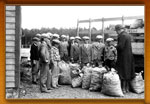 Fred W. Besley (father of Maryland forestry) and a student of Gifford Pinchot (father of American forestry), brought forest tree nursery science to Maryland as its first state forester. Besley gained his knowledge and experience from working in 1904 as a superintendent at the U.S. Forest Service Tree Nursery at Halsey, Nebraska, the first federal tree nursery established in the country. Kirk Rodgers, Fred W. Besley’s grandson, said that one of the earliest and most vigorous efforts his grandfather undertook as a state forester was to establish a state tree nursery. “He was particularly interested in forest regeneration. He was ashamed with the way Maryland’s roadsides looked. He made this into a crusade."
Fred W. Besley (father of Maryland forestry) and a student of Gifford Pinchot (father of American forestry), brought forest tree nursery science to Maryland as its first state forester. Besley gained his knowledge and experience from working in 1904 as a superintendent at the U.S. Forest Service Tree Nursery at Halsey, Nebraska, the first federal tree nursery established in the country. Kirk Rodgers, Fred W. Besley’s grandson, said that one of the earliest and most vigorous efforts his grandfather undertook as a state forester was to establish a state tree nursery. “He was particularly interested in forest regeneration. He was ashamed with the way Maryland’s roadsides looked. He made this into a crusade."
 Thanks to the efforts of Fred. W. Besley, Maryland's first State Forester, Maryland's Wye Oak was long recognized as the largest white oak tree in the state and the nation. Its stately presence in the village of Wye Mills in Talbot County had marked the passage of time for many generations. On June 6, 2002 the mighty Wye Oak succumbed to time and the elements as its massive trunk collapsed during a severe thunderstorm. It was estimated to be more than 450 years old at the time of its fall. In 2004, The State of Maryland offered remnants of the
Wye Oak to Maryland artists interested in producing artwork with their varied talent and creative expression. The Maryland Department of Natural Resources is pleased to present the commemorative work of Maryland artists, whose imaginative tributes to Maryland’s fallen Wye Oak Tree are truly impressive. Welcome to the The Wye Oak Gallery.
Thanks to the efforts of Fred. W. Besley, Maryland's first State Forester, Maryland's Wye Oak was long recognized as the largest white oak tree in the state and the nation. Its stately presence in the village of Wye Mills in Talbot County had marked the passage of time for many generations. On June 6, 2002 the mighty Wye Oak succumbed to time and the elements as its massive trunk collapsed during a severe thunderstorm. It was estimated to be more than 450 years old at the time of its fall. In 2004, The State of Maryland offered remnants of the
Wye Oak to Maryland artists interested in producing artwork with their varied talent and creative expression. The Maryland Department of Natural Resources is pleased to present the commemorative work of Maryland artists, whose imaginative tributes to Maryland’s fallen Wye Oak Tree are truly impressive. Welcome to the The Wye Oak Gallery.
 The first State Forester, Fred W. Besley, was witness to the loss of the American chestnut to the chestnut blight (Cryphonectria parasitica), which was first identified in the United States in 1902. At that time, the tree dominated the Appalachian mountaintops from Maine to Georgia. A fast growing species with straight-grained, rot-resistant wood, the American chestnut grew trunks as much at 19 feet in diameter. In less than 30 years, these forest giants had virtually disappeared, leaving acres of stands of dead wood. On Friday, May 26, 2006, representatives of the Department of Natural Resources (DNR) and The American Chestnut Foundation (TACF) planted an American chestnut seedling in a ceremony at Green Ridge State Forest in Allegany County, marking the signing of an historic agreement between the two organizations that will promote cooperation in research and eventual restoration of the species in Maryland.
The first State Forester, Fred W. Besley, was witness to the loss of the American chestnut to the chestnut blight (Cryphonectria parasitica), which was first identified in the United States in 1902. At that time, the tree dominated the Appalachian mountaintops from Maine to Georgia. A fast growing species with straight-grained, rot-resistant wood, the American chestnut grew trunks as much at 19 feet in diameter. In less than 30 years, these forest giants had virtually disappeared, leaving acres of stands of dead wood. On Friday, May 26, 2006, representatives of the Department of Natural Resources (DNR) and The American Chestnut Foundation (TACF) planted an American chestnut seedling in a ceremony at Green Ridge State Forest in Allegany County, marking the signing of an historic agreement between the two organizations that will promote cooperation in research and eventual restoration of the species in Maryland.
 Along the tidal Potomac River on the Nanjemoy peninsula is Nanjemoy NRMA, one of the most ecologically and culturally significant landscapes remaining in Maryland. The waterfront portion of the property is entirely within the state’s Critical Area and provides refuge for migratory waterfowl and wading birds. It also contains an extensive network of tidal and non-tidal wetlands and secluded bays that protect bay grasses, which in turn clean the Bay and provide habitat for numerous fish and invertebrate species. Find out how this valuable property, which is prized also for its cultural and historical significance, came to be protected.
Along the tidal Potomac River on the Nanjemoy peninsula is Nanjemoy NRMA, one of the most ecologically and culturally significant landscapes remaining in Maryland. The waterfront portion of the property is entirely within the state’s Critical Area and provides refuge for migratory waterfowl and wading birds. It also contains an extensive network of tidal and non-tidal wetlands and secluded bays that protect bay grasses, which in turn clean the Bay and provide habitat for numerous fish and invertebrate species. Find out how this valuable property, which is prized also for its cultural and historical significance, came to be protected.
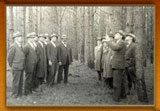 When Gifford Pinchot, the father of American forestry, entered Yale in 1885 and decided to make forestry his profession, he did not have a single American role model. There was no profession of forestry in this country. “I had no more conception of what it meant to be a forester than the man in the moon,” he wrote. “But at least a forester worked in the woods and with the woods - and I loved the woods and everything about them.” Today, more than a century later, the profession has expanded in ways even Pinchot could not have imagined, but its practitioners are still bonded by the same love of the forest.
When Gifford Pinchot, the father of American forestry, entered Yale in 1885 and decided to make forestry his profession, he did not have a single American role model. There was no profession of forestry in this country. “I had no more conception of what it meant to be a forester than the man in the moon,” he wrote. “But at least a forester worked in the woods and with the woods - and I loved the woods and everything about them.” Today, more than a century later, the profession has expanded in ways even Pinchot could not have imagined, but its practitioners are still bonded by the same love of the forest.
 ”The Wye Oak was a spectacular giant and there can be little question that my grandfather, Fred W. Besley, Maryland’s first State Forester was inspired by it and that it added to his determination to establish the Big Tree Champion Program here in Maryland. When he first saw the tree in 1909 he had already noted the
impressive number of big trees here in Maryland and was beginning to collect information about them… As time passed he began to be more and more systematic in making measurements and taking photographs of big trees. He worked almost alone for 15 years in documenting them.” – Kirk Rodgers
”The Wye Oak was a spectacular giant and there can be little question that my grandfather, Fred W. Besley, Maryland’s first State Forester was inspired by it and that it added to his determination to establish the Big Tree Champion Program here in Maryland. When he first saw the tree in 1909 he had already noted the
impressive number of big trees here in Maryland and was beginning to collect information about them… As time passed he began to be more and more systematic in making measurements and taking photographs of big trees. He worked almost alone for 15 years in documenting them.” – Kirk Rodgers
 Garrett County is home to two vastly different and quite unique state parks with one common thread: their shared history. Both Swallow Falls and Herrington Manor state parks exist today because of the foresight of several key individuals. From the Garrett Brothers, who donated the tract of land between the two parks and Swallow Falls, to the philanthropist Henry Krug who loved the area so much he refused to let the woods around the falls be harvested for lumber, to the dedicated members of Civilian Conservation Corps, their efforts have made the parks the recreational destinations that they are today.
Garrett County is home to two vastly different and quite unique state parks with one common thread: their shared history. Both Swallow Falls and Herrington Manor state parks exist today because of the foresight of several key individuals. From the Garrett Brothers, who donated the tract of land between the two parks and Swallow Falls, to the philanthropist Henry Krug who loved the area so much he refused to let the woods around the falls be harvested for lumber, to the dedicated members of Civilian Conservation Corps, their efforts have made the parks the recreational destinations that they are today.
 There is no doubt that North Point State Park is one of Maryland's most
unique and important natural areas. Though it sits in the shadow of Baltimore, just a few miles outside the city's Beltway, this 1,320 acre waterfront park includes more than six miles of shoreline along the Chesapeake Bay, Back River, and Shallow Creek. Here a large bayside marsh, Black Marsh, that is considered to be one of the finest examples of a tidal marsh on the Upper Chesapeake. Visitors can hike on miles of trails through the marsh and can explore the remains of a turn of the century amusement park. North Point is rich in natural beauty. Come see how Mother Nature reclaimed the land where the amusement park once stood. Today visitors to southeastern Baltimore County can take advantage of the Visitor Center at North Point State Park, one of the DNRs premier attractions.
There is no doubt that North Point State Park is one of Maryland's most
unique and important natural areas. Though it sits in the shadow of Baltimore, just a few miles outside the city's Beltway, this 1,320 acre waterfront park includes more than six miles of shoreline along the Chesapeake Bay, Back River, and Shallow Creek. Here a large bayside marsh, Black Marsh, that is considered to be one of the finest examples of a tidal marsh on the Upper Chesapeake. Visitors can hike on miles of trails through the marsh and can explore the remains of a turn of the century amusement park. North Point is rich in natural beauty. Come see how Mother Nature reclaimed the land where the amusement park once stood. Today visitors to southeastern Baltimore County can take advantage of the Visitor Center at North Point State Park, one of the DNRs premier attractions.
 On June 6, 2006 at the planting of the Wye Oak Clone and Wye Oak Artist Exhibition in Wye Oak State Park, artist Lawrence Romorini unveiled his latest piece of art, “The Life Of A Tree,” commemorating the extraordinary and beloved Wye Oak, which was felled by lightening in 2002, after approximately 450 years on the Eastern Shore in Maryland. The art, which is 72” x 38” x 9.5” features an actual branch from the Wye Oak, mounted on a scroll with an artistic rendition of the tree and its radius. These 450 concentric rings offer an appreciation for both the remarkable size and longevity of this mighty oak. Starting with the acorn on the upper left, miniaturized photographs, memorabilia and three-dimensional symbols serve as some reminders of the long history that transpired for the nation and Maryland during the 450+ years that the Wye Oak lived on the Eastern Shore.
On June 6, 2006 at the planting of the Wye Oak Clone and Wye Oak Artist Exhibition in Wye Oak State Park, artist Lawrence Romorini unveiled his latest piece of art, “The Life Of A Tree,” commemorating the extraordinary and beloved Wye Oak, which was felled by lightening in 2002, after approximately 450 years on the Eastern Shore in Maryland. The art, which is 72” x 38” x 9.5” features an actual branch from the Wye Oak, mounted on a scroll with an artistic rendition of the tree and its radius. These 450 concentric rings offer an appreciation for both the remarkable size and longevity of this mighty oak. Starting with the acorn on the upper left, miniaturized photographs, memorabilia and three-dimensional symbols serve as some reminders of the long history that transpired for the nation and Maryland during the 450+ years that the Wye Oak lived on the Eastern Shore.
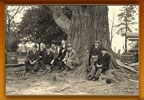 As a direct result of the Garrett's generous and farsighted gift, the legislature passed Maryland's first forestry law. It dealt mainly with the control of the forest fires which made the practice of forestry financially impractical. Specifically the law called for the establishment of a State Board of Forestry, the appointment of a State Forester and the organization of a corps of local fire wardens. The law also provided for education of woodlot owners about better management and harvesting methods. The Forestry Board's total operating budget in 1906 was $2,500.
As a direct result of the Garrett's generous and farsighted gift, the legislature passed Maryland's first forestry law. It dealt mainly with the control of the forest fires which made the practice of forestry financially impractical. Specifically the law called for the establishment of a State Board of Forestry, the appointment of a State Forester and the organization of a corps of local fire wardens. The law also provided for education of woodlot owners about better management and harvesting methods. The Forestry Board's total operating budget in 1906 was $2,500.
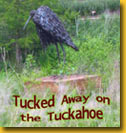 Along Tuckahoe State Park’s extensive trail system, imaginative visitors can re-create the park’s history. Former farmsteads, long abandoned and overgrown, are marked in spring by gardens of jonquils. Trees flower next to the skeletal remains of old foundations. Occasionally, sections of fencing, rusted farm equipment and other long-forgotten “trash” appear along the trails, to be discovered by curious hikers. The stream valley has also been noted as a route along the Underground Railroad for runaway slaves heading north toward freedom. Even the park’s administrative office is a piece of history. A farmhouse typical of those built at the turn of the 20th century, it was purchased along with the surrounding farmland when the park was being created and has been carefully restored by park staff.
Along Tuckahoe State Park’s extensive trail system, imaginative visitors can re-create the park’s history. Former farmsteads, long abandoned and overgrown, are marked in spring by gardens of jonquils. Trees flower next to the skeletal remains of old foundations. Occasionally, sections of fencing, rusted farm equipment and other long-forgotten “trash” appear along the trails, to be discovered by curious hikers. The stream valley has also been noted as a route along the Underground Railroad for runaway slaves heading north toward freedom. Even the park’s administrative office is a piece of history. A farmhouse typical of those built at the turn of the 20th century, it was purchased along with the surrounding farmland when the park was being created and has been carefully restored by park staff.
 Just east of the town of Denton in rural Caroline County, Martinak State Park sits quietly nestled along the banks of the Choptank River. Martinak was one of the first Maryland state parks to be designated a Chesapeake Bay Gateways Network site, and is part of a system of over 120 parks, wildlife refuges, museums, historic communities and trails around the Bay watershed through which one can experience and learn about the Chesapeake. The Nature Center’s interpretive displays are interesting and informative. A striking mural painted by local artist Kurt Plinke features commonly found flora and fauna, including a nearly life-sized great blue heron and bald eagle. Other displays highlight the Delmarva Peninsula’s Native Indian population, including a collection of artifacts found in the area by retired park ranger Joe Reinhardt. The main feature of the Nature Center is an 800-gallon aquarium containing a variety of species from the Choptank River and nearby Watt’s Creek.
Just east of the town of Denton in rural Caroline County, Martinak State Park sits quietly nestled along the banks of the Choptank River. Martinak was one of the first Maryland state parks to be designated a Chesapeake Bay Gateways Network site, and is part of a system of over 120 parks, wildlife refuges, museums, historic communities and trails around the Bay watershed through which one can experience and learn about the Chesapeake. The Nature Center’s interpretive displays are interesting and informative. A striking mural painted by local artist Kurt Plinke features commonly found flora and fauna, including a nearly life-sized great blue heron and bald eagle. Other displays highlight the Delmarva Peninsula’s Native Indian population, including a collection of artifacts found in the area by retired park ranger Joe Reinhardt. The main feature of the Nature Center is an 800-gallon aquarium containing a variety of species from the Choptank River and nearby Watt’s Creek.
 Celebrate the 250th anniversary of the construction of Fort Frederick in Washington County this weekend! Anniversary activities include breaking ground for the soon-to-be-constructed Officers Quarters, historic reenactments and encampments, interpretive programs, period entertainers, performances by historical bands, including General Pershing’s Own Army Band and the nationally-famous Civil War Wildcat Regimental Band, and fireworks! For additional information about Fort Frederick State Park, a designated state park since the 1920s, its history and scheduled events, visit online or call 301-842-2155.
Celebrate the 250th anniversary of the construction of Fort Frederick in Washington County this weekend! Anniversary activities include breaking ground for the soon-to-be-constructed Officers Quarters, historic reenactments and encampments, interpretive programs, period entertainers, performances by historical bands, including General Pershing’s Own Army Band and the nationally-famous Civil War Wildcat Regimental Band, and fireworks! For additional information about Fort Frederick State Park, a designated state park since the 1920s, its history and scheduled events, visit online or call 301-842-2155.
 Patapsco Valley State Park, which dates back to 1907 and is one of Maryland's oldest state parks, lies in a steep river valley and extends along 32 miles of the Patapsco River. The river valley and its natural resources have long been enjoyed by the Native Americans, explorers and settlers as well as present-day citizens, and the park is nationally recognized today for its trail opportunities and scenery. The Grist Mill Trail is a moderate route and popular destination for parents with children in strollers, families on biking trips and people
with disabilities. The Grist Mill Trail parallels the river for a mile and a half and provides a close-up view of its scenic beauty, while leading past numerous sites of historic interest.
Patapsco Valley State Park, which dates back to 1907 and is one of Maryland's oldest state parks, lies in a steep river valley and extends along 32 miles of the Patapsco River. The river valley and its natural resources have long been enjoyed by the Native Americans, explorers and settlers as well as present-day citizens, and the park is nationally recognized today for its trail opportunities and scenery. The Grist Mill Trail is a moderate route and popular destination for parents with children in strollers, families on biking trips and people
with disabilities. The Grist Mill Trail parallels the river for a mile and a half and provides a close-up view of its scenic beauty, while leading past numerous sites of historic interest.
 Point Lookout in Green Ridge State Forest really is one of “Maryland’s best-kept secrets.” Not to be confused with the southern Maryland state park of the same name, visitors to Point Lookout have a spectacular view of the ancient Potomac River valley. DNR established the area around Point Lookout as wildlands, thus protecting the view on the Maryland side. Visitors to Point Lookout today can enjoy the same view that the Union troops had 140 years ago when they used Point lookout to observe Confederate movements through the valley. Also from this historic overlook, one can survey 243 acres of land once owned by George Washington, first President of the United States.
Point Lookout in Green Ridge State Forest really is one of “Maryland’s best-kept secrets.” Not to be confused with the southern Maryland state park of the same name, visitors to Point Lookout have a spectacular view of the ancient Potomac River valley. DNR established the area around Point Lookout as wildlands, thus protecting the view on the Maryland side. Visitors to Point Lookout today can enjoy the same view that the Union troops had 140 years ago when they used Point lookout to observe Confederate movements through the valley. Also from this historic overlook, one can survey 243 acres of land once owned by George Washington, first President of the United States.
 It was Gifford Pinchot, the nation's first practicing forester and for 12 years chief of what became the U.S. Forest Service, who influenced Fred W. Besley, Maryland's first state forester, to become an outstanding environmental leader. Though not well-known today, it was Pinchot who convinced President Teddy Roosevelt to launch the conservation movement in America. Most of our national forests exist largely because of his persistence. Besley, who worked for Pinchot as a student assistant, became Maryland's first state forester in 1906, and
went on to establish our state's system of forests and parks, mirroring
in part Pinchot's work for the nation.
It was Gifford Pinchot, the nation's first practicing forester and for 12 years chief of what became the U.S. Forest Service, who influenced Fred W. Besley, Maryland's first state forester, to become an outstanding environmental leader. Though not well-known today, it was Pinchot who convinced President Teddy Roosevelt to launch the conservation movement in America. Most of our national forests exist largely because of his persistence. Besley, who worked for Pinchot as a student assistant, became Maryland's first state forester in 1906, and
went on to establish our state's system of forests and parks, mirroring
in part Pinchot's work for the nation.
 Have you ever imagined what it’s like to paddle through a bald cypress swamp? Uncover the secrets of the Great Cypress Swamp with a trip to Pocomoke River State Park in Worcester County to. Travel just 20 minutes outside of Salisbury and three miles south of Snow Hill, and you will stumble upon Shad Landing where you can begin your journey to learn more about the history and inhabitants of this often-misunderstood ecosystem, the northernmost bald cypress swamp in the United States.
Have you ever imagined what it’s like to paddle through a bald cypress swamp? Uncover the secrets of the Great Cypress Swamp with a trip to Pocomoke River State Park in Worcester County to. Travel just 20 minutes outside of Salisbury and three miles south of Snow Hill, and you will stumble upon Shad Landing where you can begin your journey to learn more about the history and inhabitants of this often-misunderstood ecosystem, the northernmost bald cypress swamp in the United States.
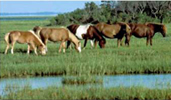 Named consistently as one of Maryland’s most visited recreational
areas, Assateague State Park averages well over one million guests
annually. This barrier island park, located on the Atlantic Ocean, is
known nationally for the wild horses that freely roam its 850 acres of
beach, sand dune, salt marsh and maritime forest. The wild horses,
popularized by Marguerite Henry’s children’s book “Misty of
Chincoteague,” have occupied the island for approximately 350 years.
Several colorful stories provide possible explanations to their origins.
Named consistently as one of Maryland’s most visited recreational
areas, Assateague State Park averages well over one million guests
annually. This barrier island park, located on the Atlantic Ocean, is
known nationally for the wild horses that freely roam its 850 acres of
beach, sand dune, salt marsh and maritime forest. The wild horses,
popularized by Marguerite Henry’s children’s book “Misty of
Chincoteague,” have occupied the island for approximately 350 years.
Several colorful stories provide possible explanations to their origins.